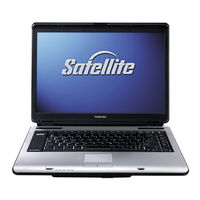Toshiba A105-S2717 Manuals
Manuals and User Guides for Toshiba A105-S2717. We have 3 Toshiba A105-S2717 manuals available for free PDF download: User Manual, Specifications
Advertisement
Toshiba A105-S2717 User Manual (273 pages)
Toshiba Online Users Guide for Satellite A100/A105
Table of Contents
Toshiba A105-S2717 Specifications (11 pages)
Toshiba Satellite A105-S2716: Specifications
Advertisement
Advertisement


